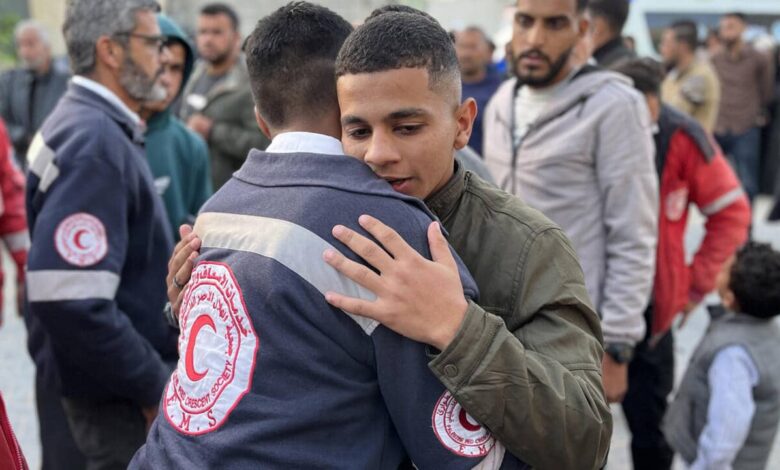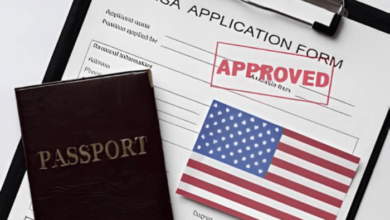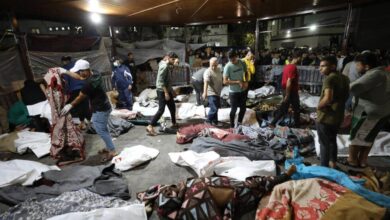
The Israeli military has amended its initial version of the March 23 killing of 15 rescue workers in Rafah, Gaza, as continuing investigations continue to probe the nature of the attack.
The army initially claimed that soldiers fired on suspicious cars approaching their base in the night, killing nine Hamas and Islamic Jihad militants who were traveling in Palestinian Red Crescent vehicles. But video footage retrieved from the cell phone of one of those killed and published by the Palestinian Red Crescent belies that, showing that emergency workers in clearly marked uniforms and vehicles came under fire from soldiers.
The single witness, Munther Abed of the Palestinian Red Crescent, corroborated this and added that soldiers fired at clearly marked emergency response vehicles. An Israeli army spokesperson said investigators were examining this video now and said findings would be communicated to army commanders soon.
Israeli news accounts say that troops identified at least six of the deceased as belonging to militant groups, but the official would not comment further or provide evidence of the identifications, saying it was based on classified information. The official emphasized that while they have reason to suspect that there were militants in their number, the investigation is ongoing.
An independent inquiry was called for by the U.N. and Palestinian Red Crescent following the incident. The shooting occurred while 17 emergency workers had been deployed to provide aid to the victims of Israeli air strikes, Red Crescent officials said.
The military’s most recent reports indicate that troops fired on a vehicle at around 4 a.m., killing two members of Hamas’s internal security forces and arresting another individual who allegedly confessed to being a Hamas member. As the hour passed, additional vehicles approached, and the troops acted again on the basis of aerial surveillance information that indicated a suspicious group.
The army spokesman stated that the troops shot from a distance, denying reports of abuse or close-range shooting. According to him, the troops believed they were engaged in combat with terrorists and hence reacted accordingly. The army maintained that they informed the U.N. about the incident on the same day and covered the bodies with camouflage netting until they could be picked up.
As the investigations continue, the conditions of the incident remain contentious, with calls for accountability and transparency increasingly intensifying.



